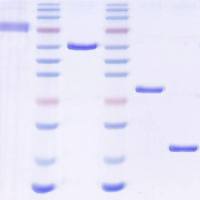Media Composition: Salts and Osmolality
互联网
625
The main components of embryo culture media are salts, which dissociate into their component inorganic ions in aqueous solution. All embryo culture media contain the same six inorganic ions: Na+ , K+ , Cl- , Ca2+ , Mg2+ , and SO 4 2- , while most also contain PO 4 2- . The salts that are used to formulate embryo culture media can be traced back to classic saline solutions, particularly Krebs-Ringer Bicarbonate (KRB), that were developed for somatic cells in the first half of the twentieth century. The salt and inorganic ion concentrations in the first successful defined mouse embryo culture medium, Whittens medium, were identical to those in KRB. These remained largely unchanged in embryo culture media for decades, with similar levels found in the standard mouse embryo culture medium, M16, formulated in the 1970s. Human embryos were initially cultured in somatic cell media such as Earles and Hams F-10 with serum added. This changed in the mid-1980s, however, with the development of Quinns HTF, a defined medium specifically formulated for human embryo culture, in which the inorganic ion concentrations are similar to those in M16 and Whittens. While these media were useful both for experimental work and clinically, embryos suffered developmental blocks in all of them, with mouse embryos blocking at the 2-cell stage and human embryos at the 4- to 8-cell stage. Starting in the late 1980s, however, mouse embryo culture media were first developed that alleviated these developmental blocks. These media, CZB and KSOM, had much lower osmolalities than previous media, mainly due to lower inorganic ion concentrations. Indeed, lowering total inorganic ion concentration and osmolality proved key to understanding how media that supported complete preimplantation development in vitro can be formulated. A subsequent improvement was the addition of amino acids to culture media for both mouse and human embryos. At least in part, their beneficial effect during the cleavage stages of development is due to the presence in early preimplantation embryos of mechanisms for cell volume regulation that depend on the accumulation of amino acids as organic osmolytes to provide intracellular osmotic support. These amino acids, principally glycine, replace a portion of the intracellular inorganic ions that would otherwise be needed to maintain cell size, preventing the intracellular ionic strength from rising to deleterious levels and blocking development. Thus, the optimum salts levels, osmolality, and amino acid contents of culture media are not independent, but interact strongly because of their roles in cell volume regulation. In the absence of compounds that preimplantation embryos can use as organic osmolytes, embryos will develop only at lower osmolalities and salt concentrations in the medium. However, when organic osmolytes such as some amino acids are present, embryos will develop in culture at higher osmolarities that are similar to those they experience in tubal fluid in vivo.






